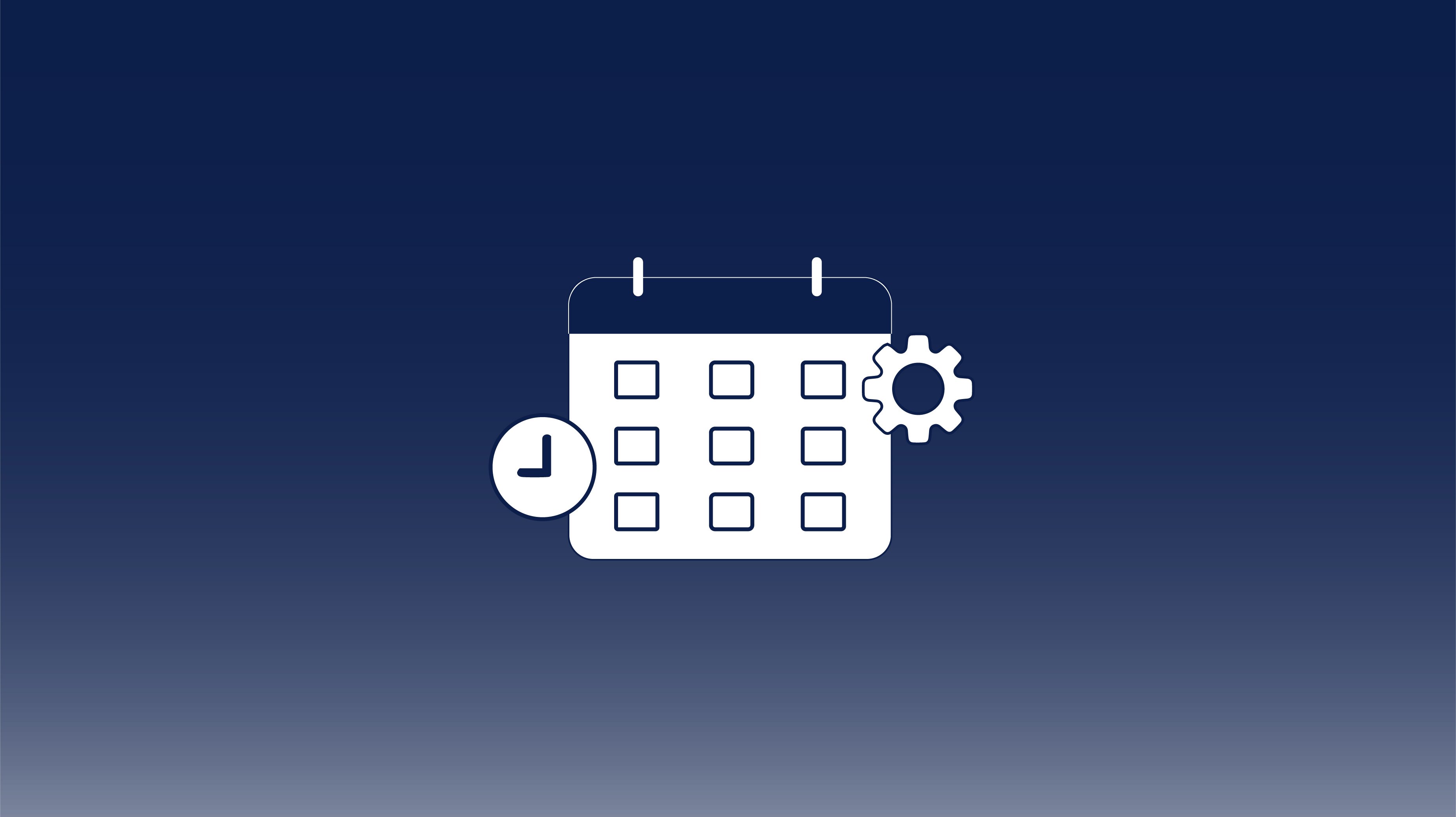Automated Accounts Receivable Programs: Cutting DSO by 30% in Six Months
In today’s economy, speed to cash is as important as speed to market. Companies that let receivables linger for 60, 75, or even 90 days are putting...

This is true, and when it comes to music, and specifically orchestral type performances, the goal is for every part of the group to contribute its unique sound in harmony. To trained ears, it’s evident when there is a gap or a lack at any one position. In extreme cases, it’s evident to untrained ears. If you’ve never had a child take up an instrument you’ll become acutely aware of this when they do as you sit through their first concert. With that said, in a similar way every component matters when you are assessing what the key components are of a robust invoice management system. Now, we know that’s a bit of a leap going from music to invoice automation, but it is nonetheless true.
In this article, we want to unpack the seven integral components of a powerful invoice management system. With that said, it presumes the notion that any business, especially those that are growing, is going to have to contend with this at some point as accounts payable is a bit of a sore spot for most companies who haven’t diligently embraced invoice automation. We know that this is an issue regardless of company size, whether revenue or employee headcount, because the fundamentals of how b2b invoicing occurs haven’t shifted in the USA in many years, unlike regional mandates around the world that have forced change upon businesses to things like EFT and e-invoicing.
1. The Onramp - No, this is not a technical term. What it essentially represents is the outset of the invoice management system as characterized by a means to pull all accounts payable invoices into the processing flow. Now, we understand that invoices present themselves in multiple ways to each business in different ways, but you need a strategy to embrace them all. The prevalent way invoices are distributed between companies today is via email, and typically in PDF format, though sometimes in . xls format. PDFs can be standalone or have batches of invoices (which are doable, but trickier to process). Other companies receive invoices through vendor portals or hard copies via mail. Whatever the case, the point is the invoices need to get digitized into an electronic format so the next phase of the process can unfold, which really holds the key to making the rest of the system hum.
2. Capture & Categorization - The ensuing component of a solid invoice management system is the capture and categorization step. Essentially, any document coming through the process must be interfaced with, and one thing of note is that accounts payable deals with numerous disparate doc types on a day-to-day basis. One may think it’s just invoices they are handling, and there is a degree of truth in that. but it is not entirely true. Other docs that AP handles on a routine basis are credit memos, statements, check request forms, tax documents, and other types of vouchers.
To make matters more complex, not all invoices are processed in an equal fashion. They might be in theory, but in practice, there are nuances to how invoices need to be classified and have their data parsed. For instance, invoices have three general categories, Non-PO, PO with an invoice match (2 way), and PO with an invoice and receiver match (3 way). Each of these subsets has a slight nuance of additional data sets that have to be captured. Universal field data for all invoice types would include Vendor Name, Invoice Date, Due Date, Invoice Number Total, Tax, & Freight. For PO-type invoices, the PO number is a requisite, and then the line-level detail includes quantity, unit of measure, price, and description, not to mention other data fields. All of this must be digitized so that the data can be surfaced, validated, and ultimately, harnessed to advance the process.
The optimal way to facilitate capture is through a blend of advanced optical character recognition with machine learning built-in (non-template (aka zonal) based OCR) that is overlaid with human quality control. This approach offers the leverage of machine intelligence for raw processing power and the acuity and clarity of human intelligence to assess any data outliers the machine is unaware of. With clean data, you have the raw material that is able to be used for advanced processing, which comes a little later.
3. Document Imaging & Management - We’ll jump back into how the data surfaced through the capture and categorization step goes in the next section, but a key underlying component of a strong invoice management system is document imaging and management. In other words, beyond having the data captured of the invoice (or other documents), you need a place to store it, retrieve it, collaborate on it, communicate from it, and generally just access it.
This is provided for when you utilize an electronic document management system and will typically involve all of these components plus varying degrees of on-screen controls. The point is you need a way to interface and retrieve the documents in a systematic fashion. For businesses that rely solely on hard copy archival, whether onsite or via an off-site archival service, you understand the pain that entails when it comes time to produce copies for audit or review. Therefore, getting this into an electronic format that is compliant with your retention period is key. All of this is indispensable for someone trying to assemble a meaningful invoice management system.
4. Bi-directional Integration - So you’ve conquered how to get the raw documents into the process, how to surface and cleanse the data housed in those documents, and where to store the documents after the capture process. Great! Now the question is what can the data do for you in terms of augmenting and impacting human efforts?
The answer lies in the integration of the data between systems, which, from our perspective must be bi-directional. Certain data elements must be obtainable and usable from whatever accounting system or ERP is being connected. As an example, the vendor master file, chart of accounts, general ledger tables, and purchase order table data are all in play depending on what you are trying to automate. With access to this data, you can combine the captured data of the invoices to attempt numerous matches and validation steps to ensure the following and more: that a vendor is official (or needs to be registered within the chart of accounts), that an invoice is not a duplicate, that line item, quantity, and price information nets out to purchase order data and falls within defined parameters for acceptable costing variances.
Additionally, the other component of integration presumes that the accounting system is capable of ingesting structured data to mitigate the need to enter data manually. In other words, by a structured data release and ingestion into the accounting system, you can stop entering invoices and instead push invoices into the system through a more advanced approach. Furthermore, you can use PO data from invoices to close out POs in the system as the data gets reconciled from invoices in the process. The key here is that the integration must be capable of both sending and receiving data.
5. Workflow and Business Rules - One of the items we looked at above presumes the utilization of sophisticated business rules in matching acceptable pricing variances. This is an example of how business intelligence can be used to enhance your process and why it’s a core tenet of a next-level invoice management system. Business rules can also be used from a timing (AP aging in days), approval threshold (dollar value-based controls), and routing perspective.
Much of this can be harmonized through an electronic approval workflow and also provide the conduit by which approvers can provide digital sign-off. This should be standard in a web-based system but is increasingly valuable in a system that synthesizes both web apps and integrated mobile apps seamlessly. If you don’t have electronic workflow functioning, you’ll have limited ability to meaningfully impact manual processes, limited audit trails, and a lack of visibility to actually manage the process actionably, which leads to our next point.
6. Visibility - Having data is important. Being able to view that data and make actionable, positive decisions using that data is even more important because it becomes a function of actual outcomes, especially with respect to dynamic invoices (unpaid and in the process). A prime example of how you can use visibility within an invoice management system in a positive way is evident when you start to examine looking at invoice queues by stakeholders (whether processors or approvers) to ensure there are no bottlenecks, or by looking at imminent action dates within your pipeline (whether payment deadlines or, more positively, pending dates for early payment discount terms.
From a reporting standpoint, visibility is essential as the easier data is to access on the back end of the process, the better from a search and audit perspective. A prime example of this that occurs each month for many businesses is the accrual function. Typically finance leadership is responsible for presenting a report on pending spending for departments for the ensuing month. This helps provide executive clarity to the ebbs and flows from a cash management standpoint. It also is something that can be easily facilitated by a standardized report that is accessing invoices in the approval process but that are unpaid. This can be very difficult to impossible as a manual exercise outside of an invoice management system but is a task that can be conquered in minutes with the digital elements we’ve put forth so far.
7. Payments - One of the final elements of a state-of-the-art invoice management system is housed in payments. While this would be considered the back end of the process, it’s key to understand that this is one of the most tangibly valuable elements of a highly functional invoice management system. That is because it represents a couple of different strategic opportunities from a value maximization standpoint. The concept of integrated payables is something we take a deep dive on over here, and encourage you to read up on! With that said, payments can be used to both drive cost and time savings from an execution standpoint (fewer checks and wires and more ACH and virtual card spend), and it is a value creation tool in that payments can be monetized when pushed through a virtual card program.
This may not seem possible, but most people in the personal finance space understand it well enough through myriad mileage, points, and rewards systems that are offered by credit card companies. Similarly, this approach is increasingly embraced by businesses and can actually transform accounts payable from a cost center into a profit center. Further, this function can actually flow dynamically and automatically as an integrated function of the approval or matching process that occurs with the full set of financial controls governing it, making it a seamless and powerful extension and the culmination of the process.
In summary, there are several key components to establishing an invoice management system that bars none. One key perspective is that Rome wasn’t built in a day. In other words, it’s important to maintain a perspective on process transformation that allows for evolution over time. Granted some of these items do need to shift simultaneously but others can be folded in over time so as to not create so much transformation that it is counterproductive to forming a healthy business culture or process.
If you want to learn more about how to do this, schedule a no-commitment demo with our team and explore how our AP Automation Solutions can help accelerate your business.

In today’s economy, speed to cash is as important as speed to market. Companies that let receivables linger for 60, 75, or even 90 days are putting...

Managing operational costs today often means balancing operational costs against tight margins, making it essential to join a group purchasing...